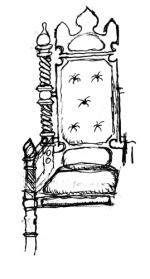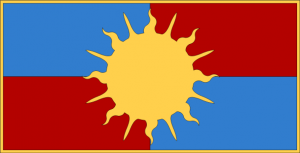Difference between revisions of "Main Page"
Trismegistus (talk | contribs) m |
Trismegistus (talk | contribs) m |
||
| Line 78: | Line 78: | ||
The [[Noble Republic of Aurice]] is ruled by the Noble Senate. The Senators preside in the [[Great Curial Hall]] on a platform called the [[Mensary]] and sit on very high thrones requiring a ladder to ascend. | The [[Noble Republic of Aurice]] is ruled by the Noble Senate. The Senators preside in the [[Great Curial Hall]] on a platform called the [[Mensary]] and sit on very high thrones requiring a ladder to ascend. | ||
| − | [[File:FlagArchpatriarchyTiomaire.png|left|thumb|300px|[[Archpatriarchy of | + | [[File:FlagArchpatriarchyTiomaire.png|left|thumb|300px|[[Archpatriarchy of Tiomairy]]]] |
The Flag of the [[Archpatriarchy of Tiomairy]] and many other flags can be found on the [[Flags of Asdar]] page. | The Flag of the [[Archpatriarchy of Tiomairy]] and many other flags can be found on the [[Flags of Asdar]] page. | ||
Revision as of 14:38, 30 May 2014
|
|
|
|
Other Resources
- World of Asdar Main Homepage This page is very minimal (2014 May 17)
- World of Asdar Blog begun 2014 May 17
- Random Article
- Gallery of New Files
- Utility Page



